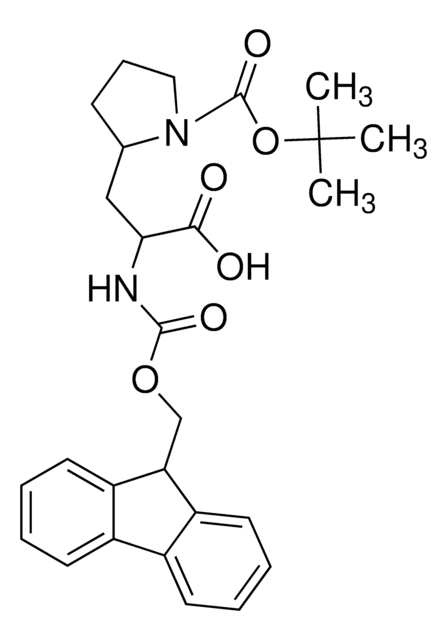CRM69083
Dinoseb
certified reference material, TraceCERT®, Manufactured by: Sigma-Aldrich Production GmbH, Switzerland
Sinónimos:
2-sec-Butyl-4,6-dinitrophenol
About This Item
Productos recomendados
grade
certified reference material
TraceCERT®
Quality Level
product line
TraceCERT®
shelf life
limited shelf life, expiry date on the label
manufacturer/tradename
Manufactured by: Sigma-Aldrich Production GmbH, Switzerland
format
neat
storage temp.
2-8°C
SMILES string
CCC(C)c1cc(cc(c1O)[N+]([O-])=O)[N+]([O-])=O
InChI
1S/C10H12N2O5/c1-3-6(2)8-4-7(11(14)15)5-9(10(8)13)12(16)17/h4-6,13H,3H2,1-2H3
InChI key
OWZPCEFYPSAJFR-UHFFFAOYSA-N
¿Está buscando productos similares? Visita Guía de comparación de productos
General description
Certified content by quantitative NMR incl. uncertainty and expiry date are given on the certificate.
Download your certificate at: http://www.sigma-aldrich.com
Dinoseb is a selective nitrophenolic herbicide used for protection against postemergence of grass and broad-leaf weeds in vegetables, fruits, nuts, and other field crops such as soybeans. In addition, it also finds its use as an insecticide for grapes, and as a seed drying agent. It acts by uncoupling oxidative phosphorylation in mitochondria and inhibiting ATP synthesis.
Under the Regulation (EC) No 1107/2009 and withdrawing the Council Directives 79/117/EEC and 91/414/EEC, dinoseb is not approved for its use as a plant protection product in the European Union (EU). It was also banned for use as a pesticide in the US in 1986 by the US EPA (Environmental Protection Agency). But a default maximum residue limit (MRL) in the range of 0.02 mg/kg to 0.1 mg/kg is set for the presence of dinoseb (measured as a sum of dinoseb, its salts, dinoseb-acetate, and binapacryl) in products of plant and animal origin.
Application
The dinoseb CRM may also be used to:
- Simultaneously determine dinoseb and pendimethalin in surface water samples using optimized direct injection (DI) and solid phase extraction (SPE) coupled to ultra high-performance liquid chromatography-tandem mass spectrometry (UPLC-MS/MS)
- Evaluate anodic voltametric analysis of dinoseb in river water samples using a boron doped diamond electrode following cathode pre-treatment and in the presence of cationic surfactants
- Extract 15 phenols from refinery wastewater samples by dispersive liquid-liquid microextraction (DLLME) technique and identify them by liquid chromatography-photodiode array detector (LC-PDA)
- Detect chlorophenoxy acid methyl esters and other chlorinated herbicides in peppermint tea, plum, and orange peel extract soft ionization gas chromatography coupled to quadrupole time-of-flight mass spectrometry (GC-QTOFMS)
- Analyze 32 pesticide residues of four different chemical classes in tea brew and tea leaves samples by a sample treatment method based on metabolomics and liquid chromatography-mass spectrometry (LC-MS)
- Determine pendimethalin, dinoseb and sodium 5-nitroguaiacolate in vegetable samples by differential pulse voltammetry (DPV) and chemometrics
Recommended products
Legal Information
¿No encuentra el producto adecuado?
Pruebe nuestro Herramienta de selección de productos.
signalword
Danger
Hazard Classifications
Acute Tox. 2 Oral - Acute Tox. 3 Dermal - Aquatic Acute 1 - Aquatic Chronic 1 - Eye Dam. 1 - Repr. 1B - Skin Irrit. 2 - Skin Sens. 1
supp_hazards
Storage Class
6.1A - Combustible acute toxic Cat. 1 and 2 / very toxic hazardous materials
wgk_germany
WGK 3
flash_point_f
306.9 °F - closed cup
flash_point_c
152.7 °C - closed cup
Elija entre una de las versiones más recientes:
Certificados de análisis (COA)
¿No ve la versión correcta?
Si necesita una versión concreta, puede buscar un certificado específico por el número de lote.
¿Ya tiene este producto?
Encuentre la documentación para los productos que ha comprado recientemente en la Biblioteca de documentos.
Nuestro equipo de científicos tiene experiencia en todas las áreas de investigación: Ciencias de la vida, Ciencia de los materiales, Síntesis química, Cromatografía, Analítica y muchas otras.
Póngase en contacto con el Servicio técnico



